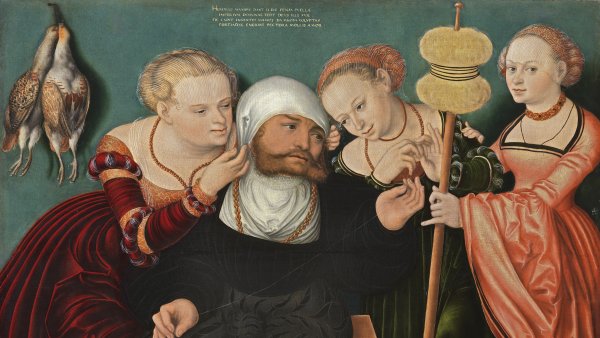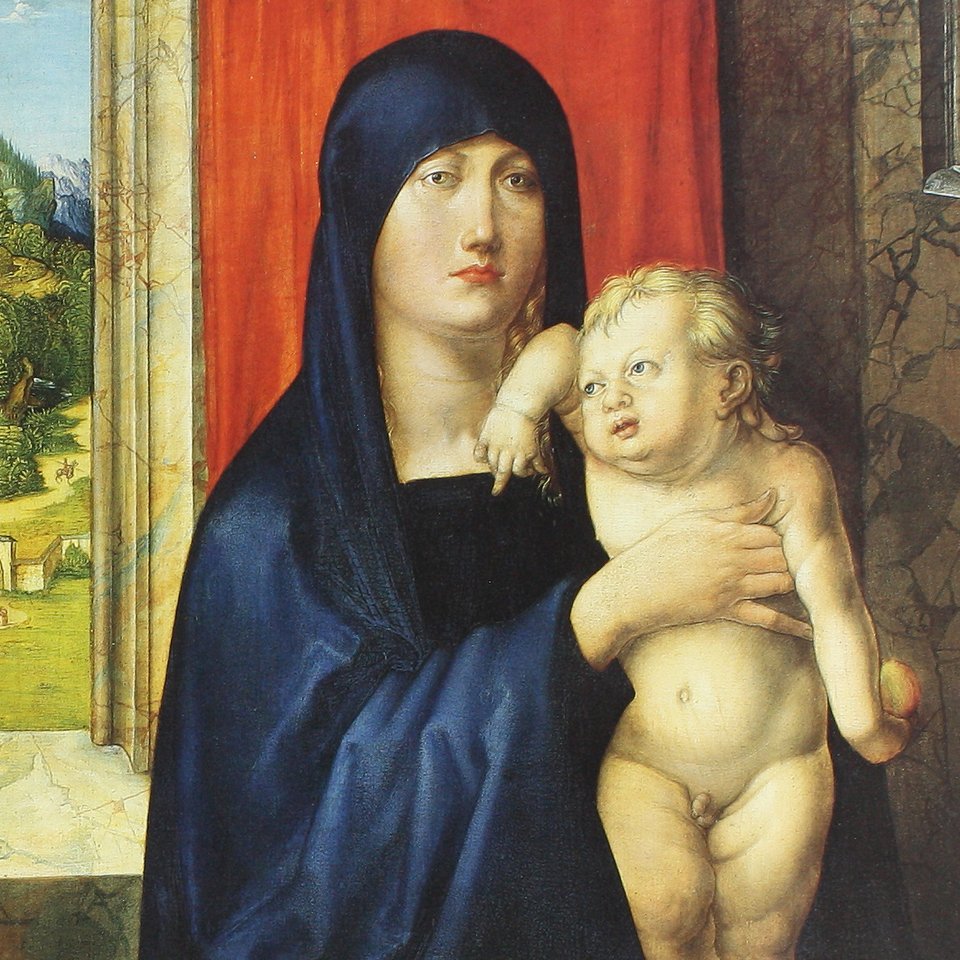Hercules at the Court of Omphale
Hans Cranach here depicts an episode from the life of Hercules, who according to Greek legend murdered his friend Iphitus in a struggle for power and who was thus punished by Hermes, who sold him to the court of Queen Omphale where he had to remain as a slave for three years.
The atmosphere in the painting is cool and distant, both with regard to the colour range and to the type of interaction between the figures. Cranach depicts Hercules seated on a wooden bench, surrounded by three courtly women and subjected to female rule, despite his celebrated physical strength. None of the women wears any distinctive item of dress or adornment for which reason it has been suggested that they are the queen’s ladies-in-waiting. There are versions of this composition by Lucas Cranach the Elder, but this one has been attributed to his son Hans due to the date and to the presence of the initials “HC” and the monogram of a serpent. Other depictions of this subject by Hans Cranach include one formerly in the Kaiser Friedrich Museum, Berlin (lost in World War II), and various versions in which there are differences in the female figures surrounding Hercules.
MGA
Hans Cranach looked for his inspiration to his father’s depictions of this subject. The present panel, which is signed with Hans Cranach’s initials and dated 1537, was painted in the year of his death in Bologna on 9 October. The similarities with his father’s style are evident in the physical types and the overall execution. Hercules, whose expression suggests that he is not happy with his predicament, is located in the foreground, seemingly seated on a wooden bench. The demigod is flanked by two women who bring their faces close to his, while a third, standing, closes the composition on the right, holding a spindle and making contact with the viewer through her gaze. According to the story, the two women next to Hercules had to dress him as a woman, for which reason the one on the left has placed a wimple on his head, and to teach him to spin, hence the thread that the one on the right passes to him. Like his father before him, Hans Cranach set the scene in a contemporary context, dressing the women in court dress with fine velvet dresses and their hair arranged with small headdresses and covered with delicate veils. Apart from the flesh tones and the bright orange-yellow of the figure on the right the chromatic range is dark and intense.
Among the versions of this subject by Lucas Cranach the Elder is one that was in the Kaiser Friedrich Museum but was destroyed in World War II. There are also others in which the painter experimented with different arrangements of the figures grouped around Hercules. These versions include the two partridges hanging on the left against the green background and the inscription, both seen here. The partridges are a symbol of lust.
Mar Borobia
Emotions through art
This artwork is part of a study we conducted to analyze people's emotional responses when observing 125 pieces from the museum.














